SANTO SOSPIR

Santo Sospir
by Addie Chapin
There are many circumstances in which a relationship can thrive. But for me and my significant other, it’s not in a car. Especially not a small car, on the other side of the road, hugging the crumbling side rail of the Grand Corniche. At the very least, this episode of marital demise would be set against a wonderfully dramatic and glorious backdrop, the Cote de Azur. It was surreal. We rerouted our trip at the last minute to land here, of all places, on a medieval mountainside. And as luck (and Expedia.com) would have it, we would occupy the only remaining room at Chevre d’Or, which so happened to be hosting the wedding of a Russian oligarch’s daughter at the time. You too would have laughed. We arrived wearing backpacks. My husband, afraid to breathe in case they charged him for air. But today, the dreamscape of Southern France seems to have quieted our tendency for on-the-road bickering. Our tiny euro-mobile descends from Eze Village through the tiny hamlets leading down to Eze sur Mer. I’m not so interested in these petite pitstops along the way, notable for being second home to the likes of Bono, tech billionaires and the yachting types. While I can appreciate a good spectacle, I am looking for a different kind. A house, a history, a living museum—one I had no business visiting except for a New York Times article I found, dated 1987.
Jean Cocteau painted the walls of his dream house…with gods, goddesses and muscular fisherman. Tours must be arranged in advance: 33-4-93-76-00-16.
To me, this fine print at the bottom of an old newspaper was nothing if not an invitation. I inquired to the international line. What do you know, a man named Eric was on the other end. “Meet me at 2 o’clock.” For reasons I can’t explain, most of my wild goose chases seem to happen this way, most serendipitously and with uncommon ease. So, in a spirit of pure naiveté and brazenness (how else should one proceed), my husband and I drive, most pleasantly, to the eponymous Villa Santo Sospir, an artistic legacy frozen in time.
Let us pause for a second, lest you picture me as some Audrey Hepburn-type. I had recently, as in days prior, discovered I was newly and unexpectedly pregnant. The present joie de vivre was about to be kicked down 100 notches with an unbearable bout of morning sickness. But damned and determined I went, somewhat nauseated, with an unquenchable curiosity cloaked only by the seasonally appropriate sweater draped across my shoulders. Onward to 14 avenue Jean Cocteau.
Arriving at our destination, it is nondescript, hidden really, behind overgrown gardens of distinct Mediterranean flora. There is a suspicious sense of quiet, only interrupted by the colorful songbirds in the trees. It is a total fantasy of fortitude, this tiny peninsula. Privacy here is a good only billions can buy, which one could rightfully presume to be a prerequisite. There are a lot of walls here, hiding some 300 homes. They could only be reached through a series of guard stations, which were oblivious to the fact that country’d come to town in the form of a Fiat.
And here stands Monsieur Marteau, my friendly French guide through the world of artist, poet and boheme Jean Cocteau and that of his pseudo soulmate, mother, and patron, Francine Weisweiller, to whom the property belonged. You see, Eric was the nurse entrusted to care for Mrs. Weisweiller in her later days. Eric was first and foremost her nurse, and then by choice of the family, the villa’s caretaker. No one, except for Francine’s daughter, could understand it in this peculiar, most personal way as would Eric Marteau, now before me in smart black-framed glasses. He was a very broad-shouldered, muscle-y male nurse, outfitted in a black polo with tattoos partially revealed at the sleeve’s end. Not what I was expecting, yet delightfully surprised at his absence of pretension.
After a brief bout of hand-shaking and who’s who, we walk over the threshold and into the living room as if we’ve casually come for an apertif. Haven’t we though? The short history of the home begins with the marriage of Francine to a man by the name of Alec Weisweiller. The year was 1941. If they survived the war, he proposed, he would buy her a dream house in the South of France. (Spoiler alert: he did.) It could be worth mentioning that Weisweiller was of the Deutsch de la Meurthe family that introduced gas pumps to France. However, as typical of many French aristocrats, they eventually led separate lives, married, though never feeling the need to divorce. Alec carried on with his mistress in Paris, and Francine, traveling to Cap Ferrat with frequency, playing consummate host to many visionary artists, actors and socialites of the time, including Picasso, Coco Chanel, Greta Garbo, and Cary Grant. Francine and Jean were introduced by way of Francine’s cousin who was starring in one of Cocteau’s films at the time. In May of 1950, Francine invited Jean to dinner at Santo Sospir. Included in the invitation was his “adopted son” and young lover, known affectionately as Doudou. Jean came for dinner, and quite simply, never left. As John Richardson, Picasso’s biographer, tells it, “they would spend their summers bound together as much by mutual admiration - a sort of collective narcissism - as by opium.”
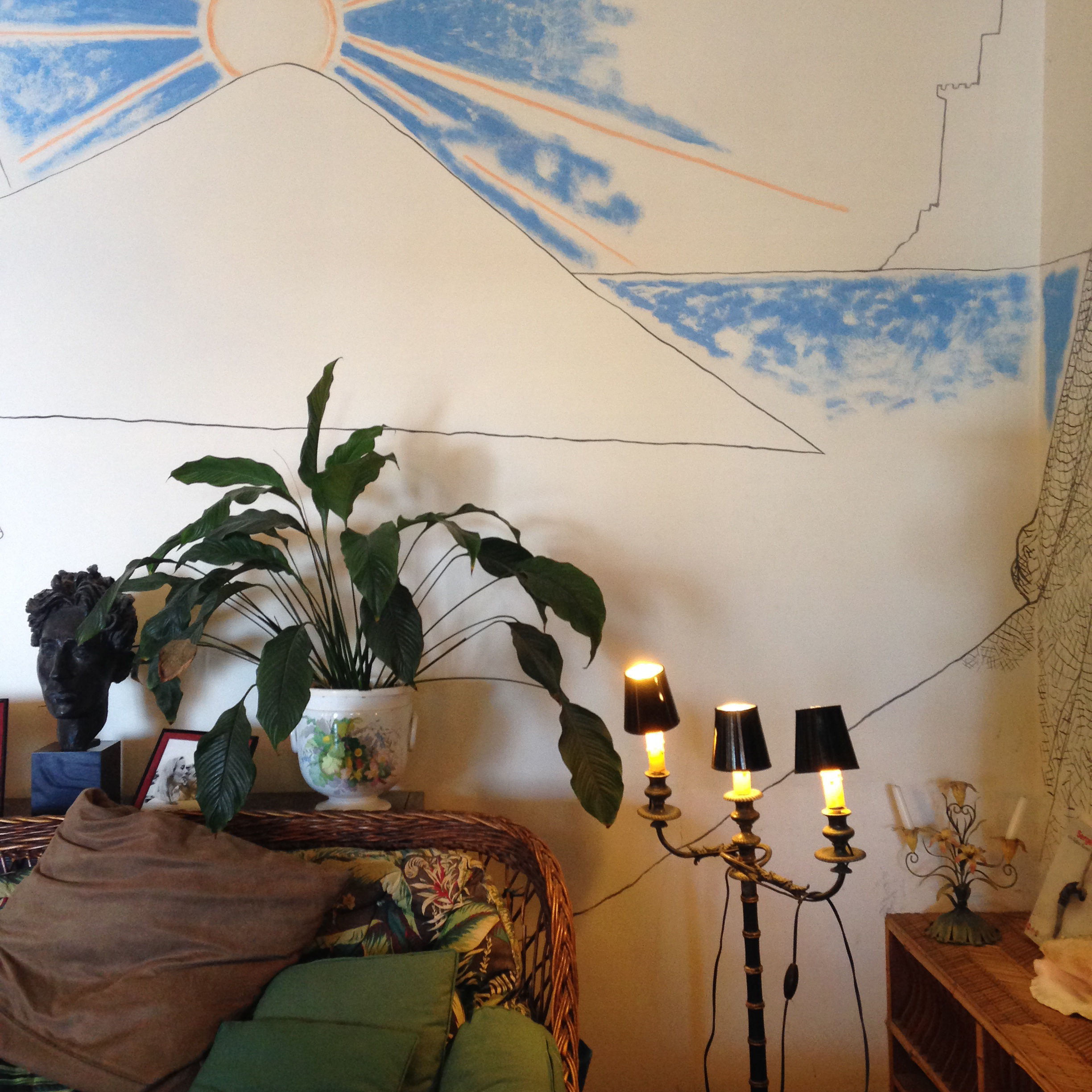
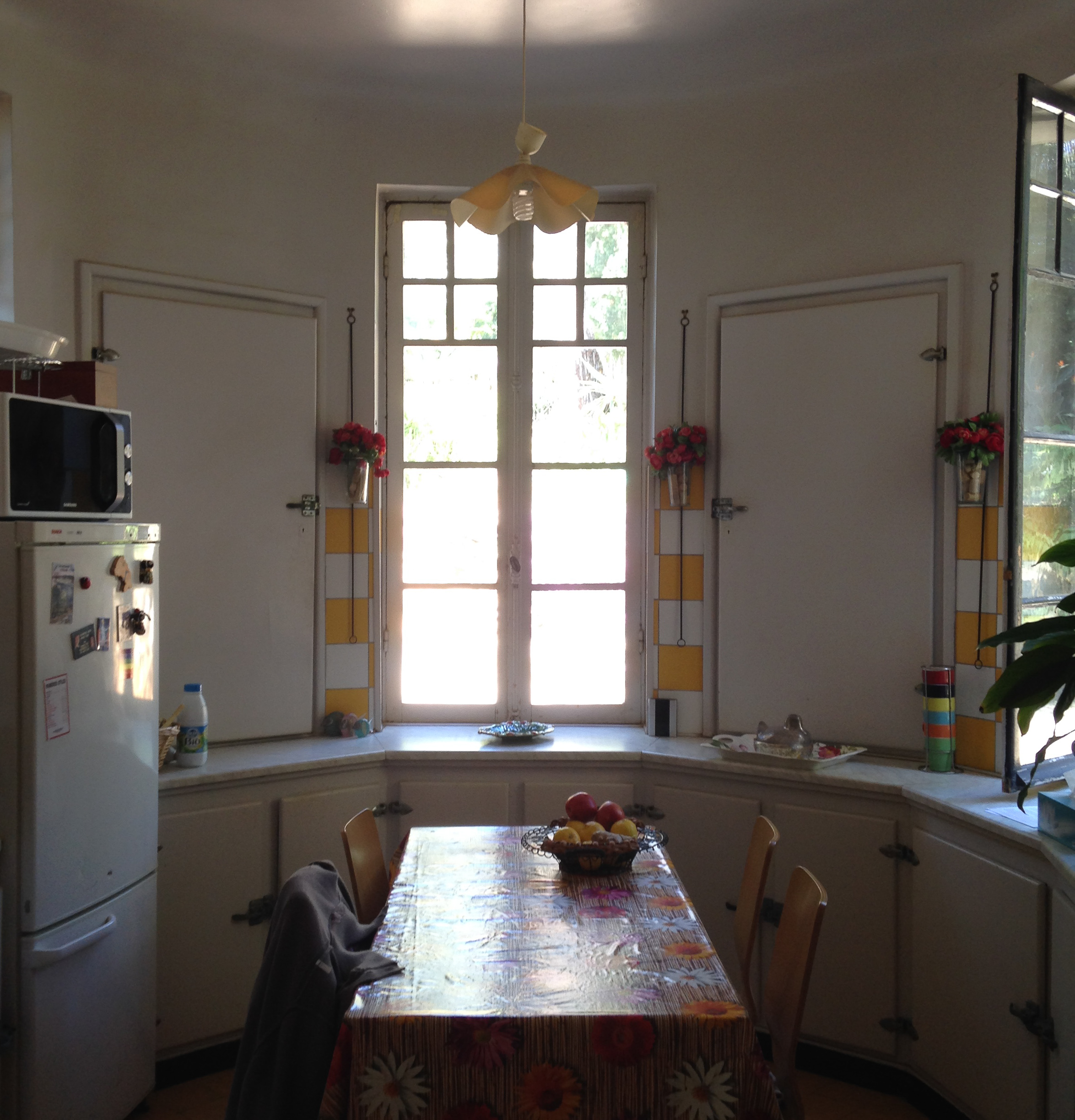

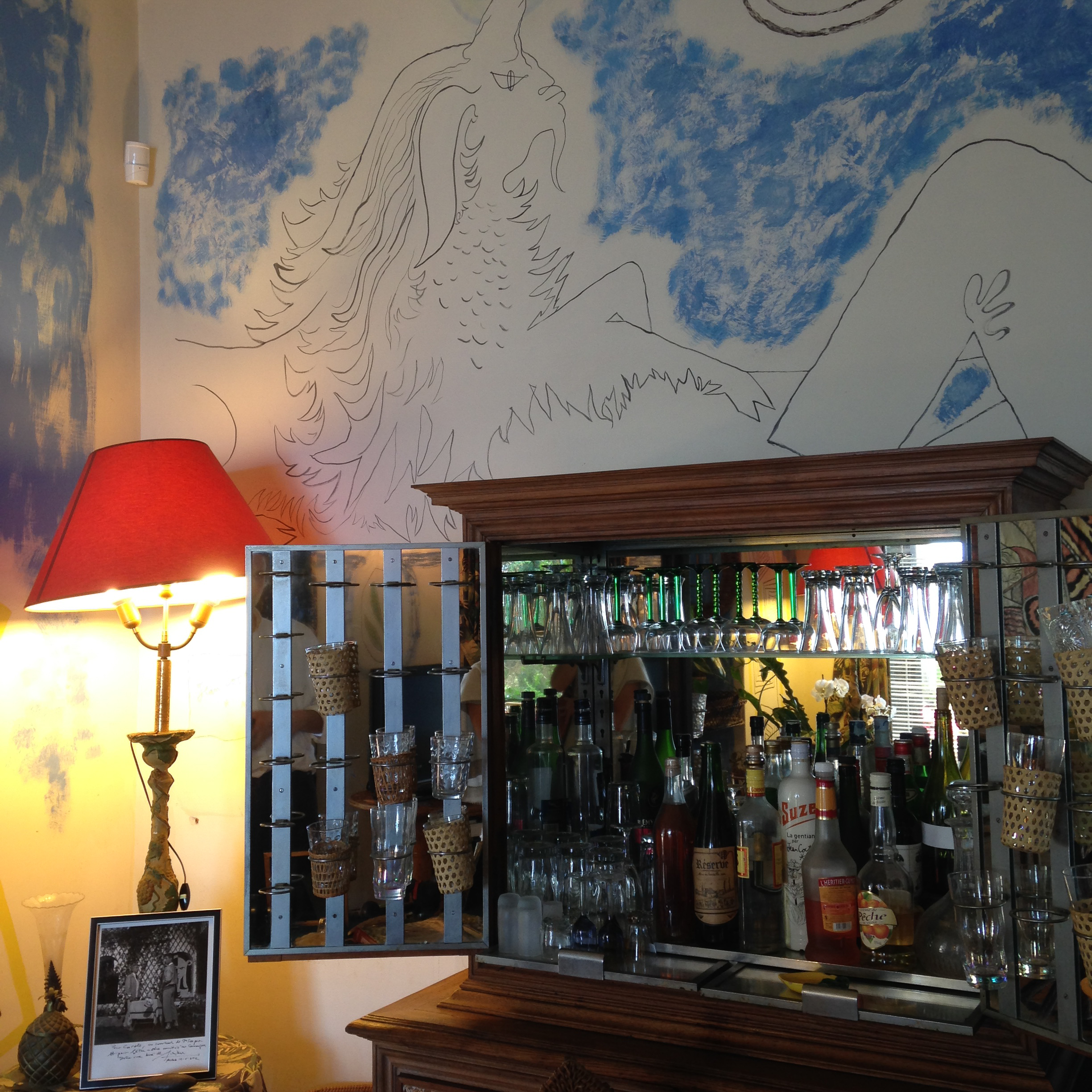
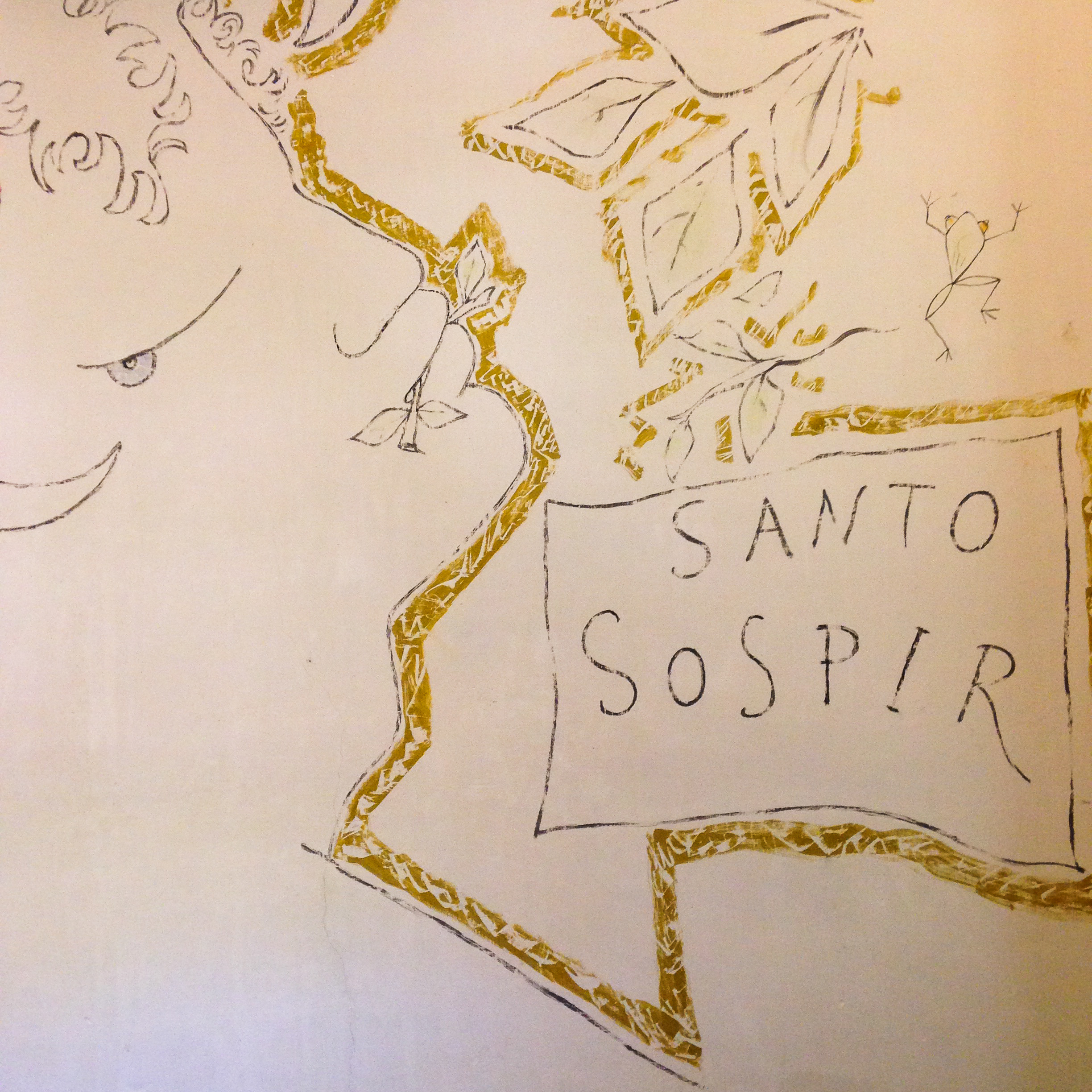
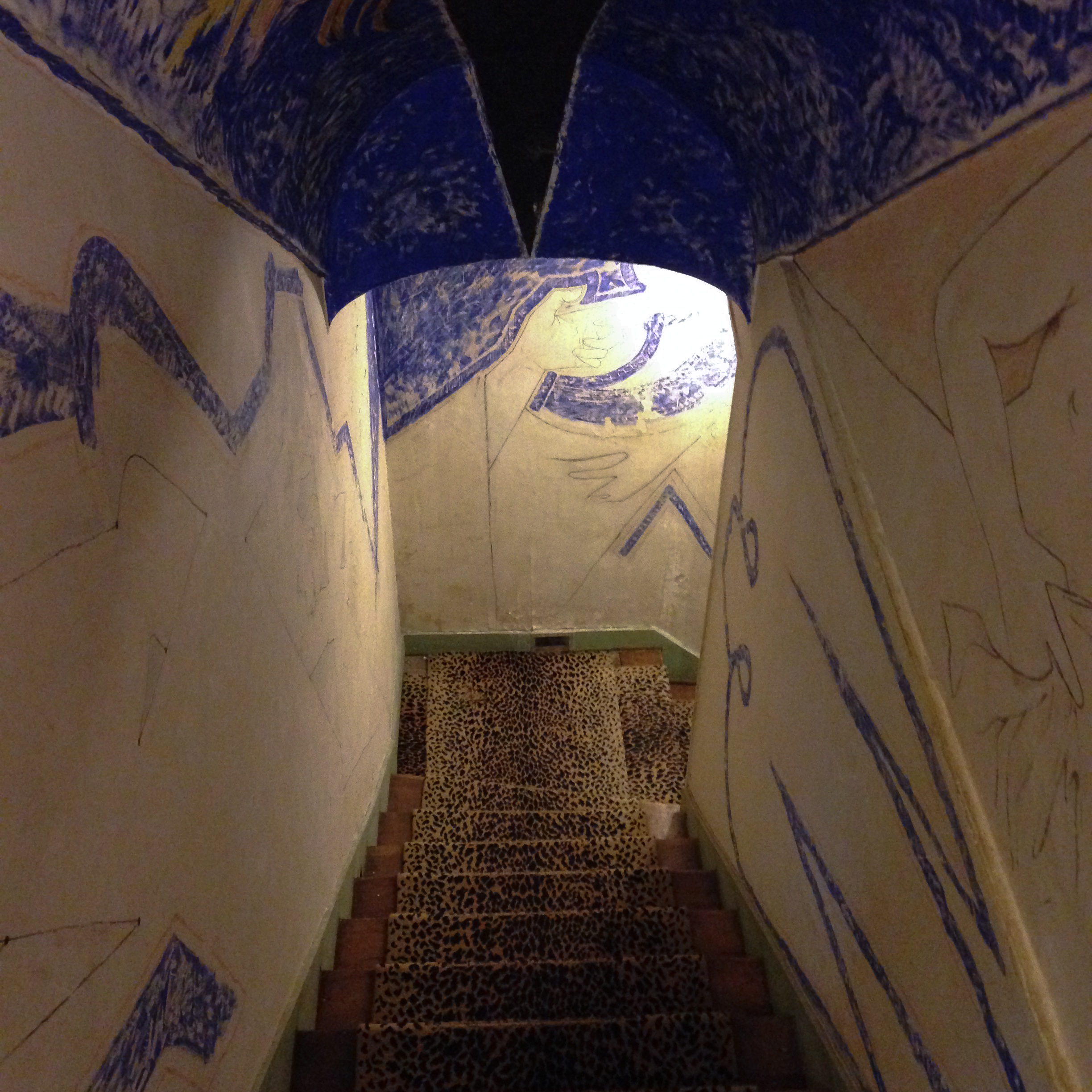
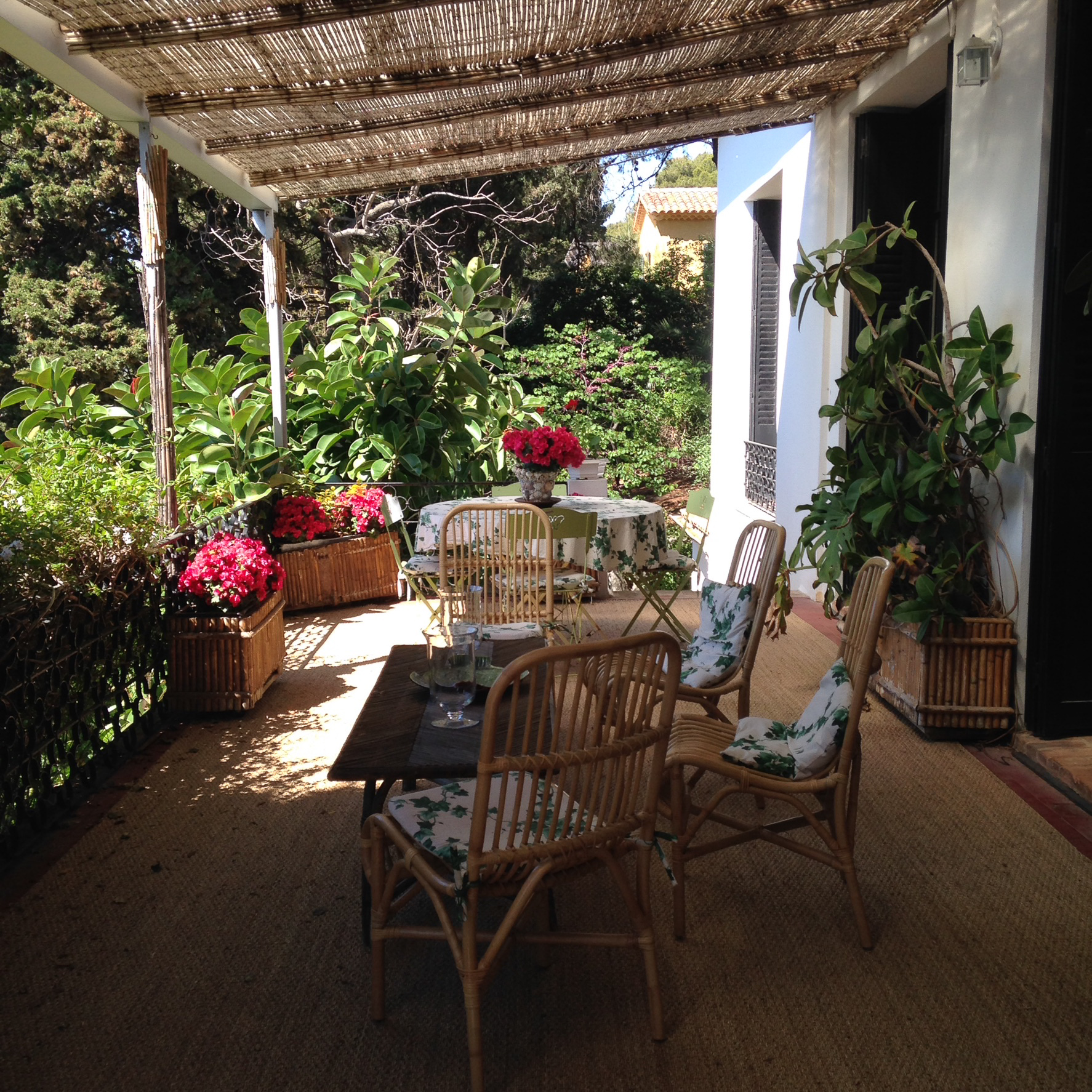
Francine delighted in the role of muse, while Cocteau let his imagination and painterly ambitions run wild, ‘tattooing,’ his own term, the very walls of the villa, first with only charcoal, and later with pastel and paint. He began first with the mantel. ‘Can I draw Apollo up there?’ I imagine little pushback. Apollo appeared, followed then by two sun gods, resembling the fishermen from nearby Villefranche, outfitted in striped berets. According to Francine’s daughter, Carole, “he found the silence of the walls terrible. Jean liked to say that he learned from Matisse that once you paint one wall, the other three look bare.” (NYTimes)
The frescoes would continue from room to room, depicting a whole army of Greek gods, sea urchins, even the local fougasse. Later, Weisweiller would enlist her friend and decorator, Madeline Castaing, to collaborate. What a daring and dangerous pair Castaing and Cocteau made. Sumatran bamboo was chosen for the furnishings, accented with bold tropical prints when fabric was called for. Castaing was known for use of animal print, avant-garde at the time, so she made no bones about covering the entire dining room, floor to ceiling, in giant reeds.
We descend to the lower levels. ‘DORMIR’ reads a large script on the wall, painted by Cocteau’s hand, directing us to the private chambers. Winding through bedrooms, we discover each character through their personal spaces, belongings untouched, the occasional still life arranged on a dresser, with postcards, books, and photographs wedged in the mirror’s frame.
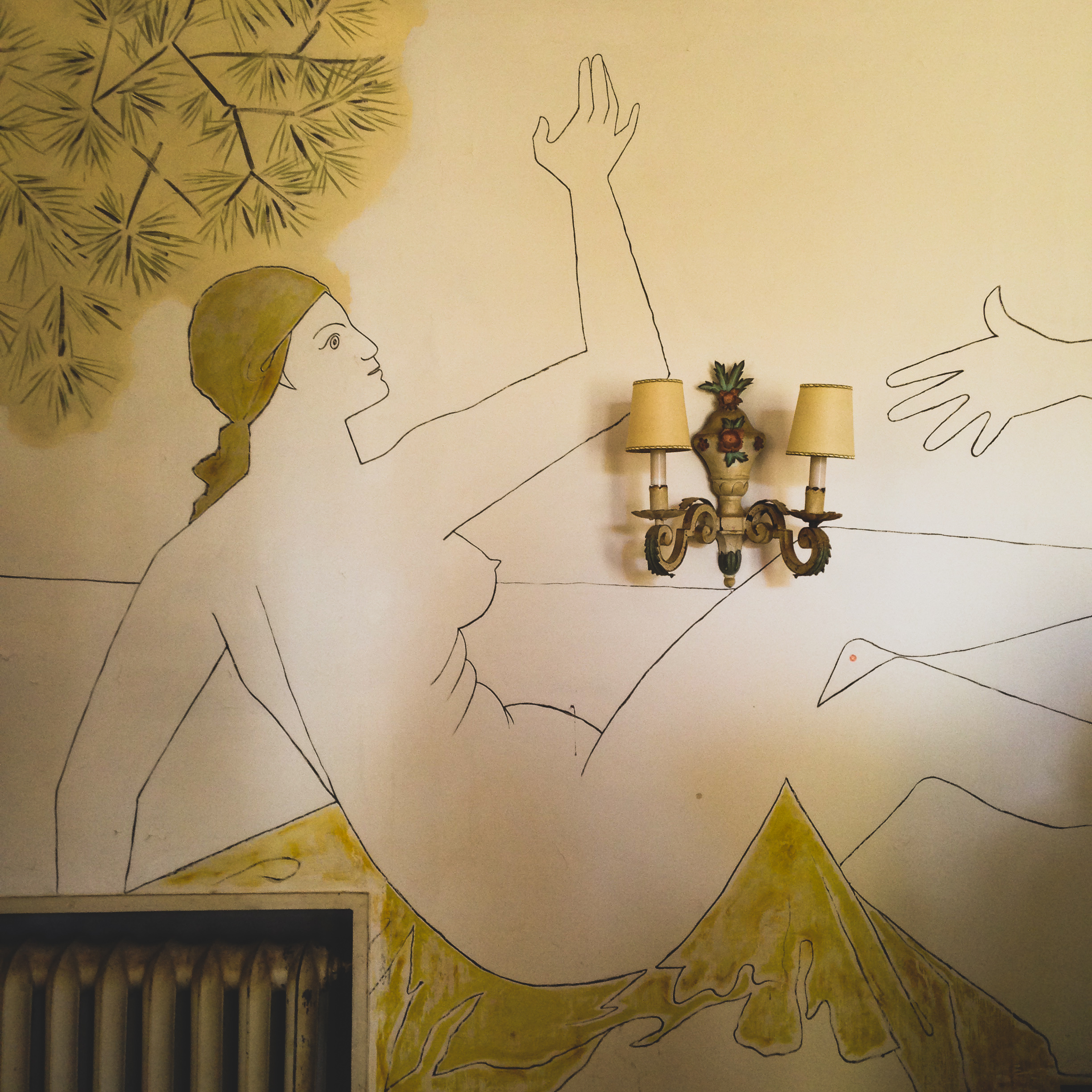

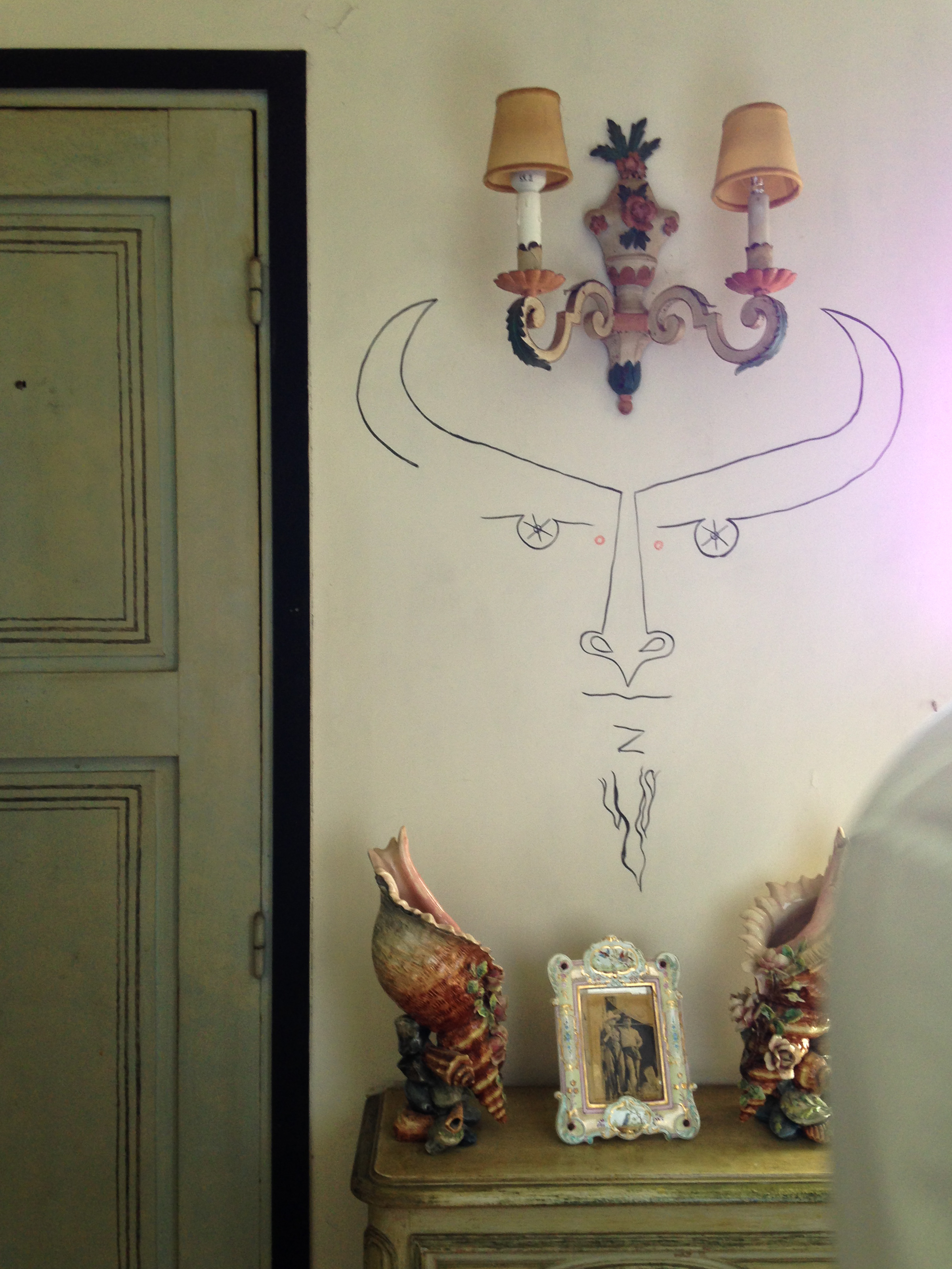

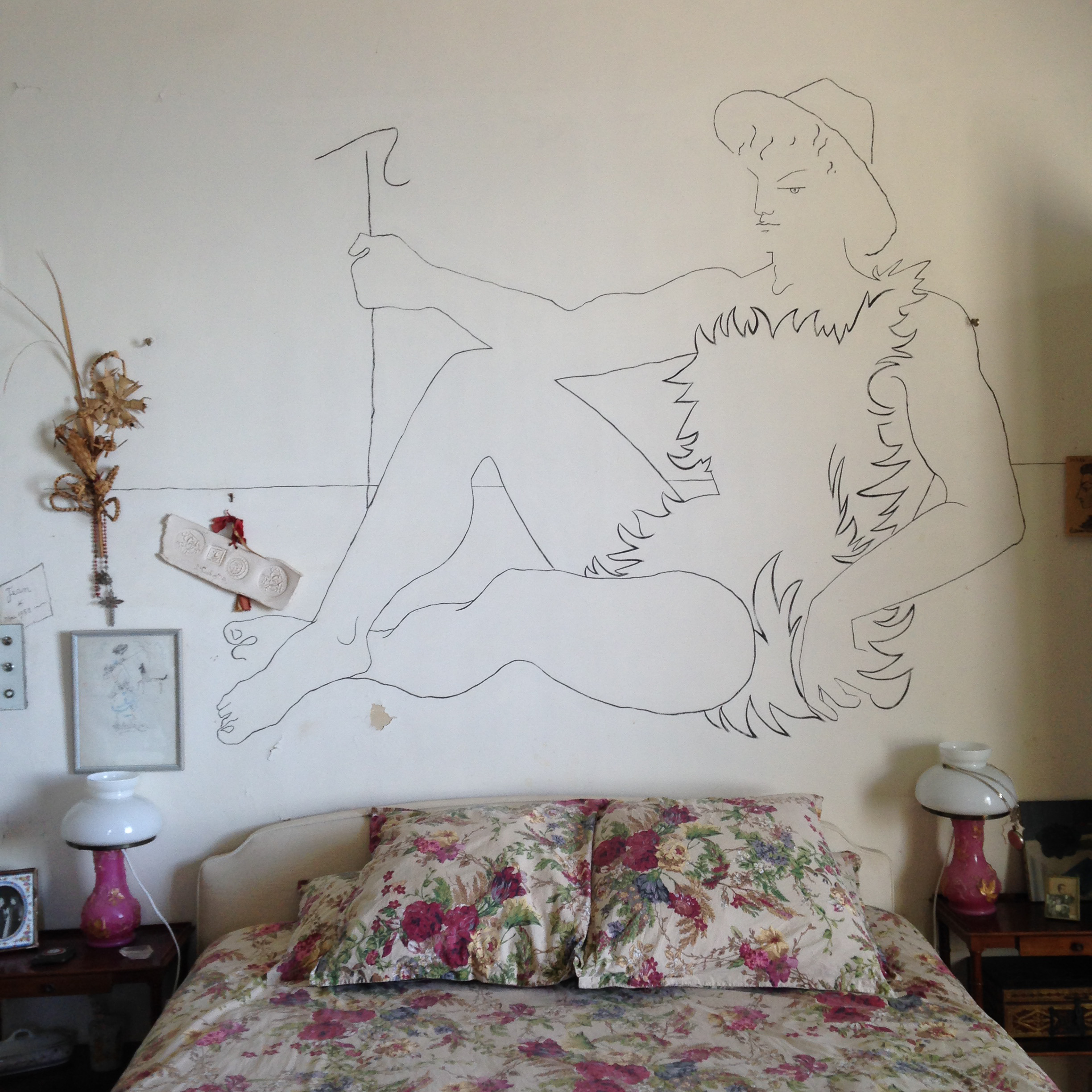
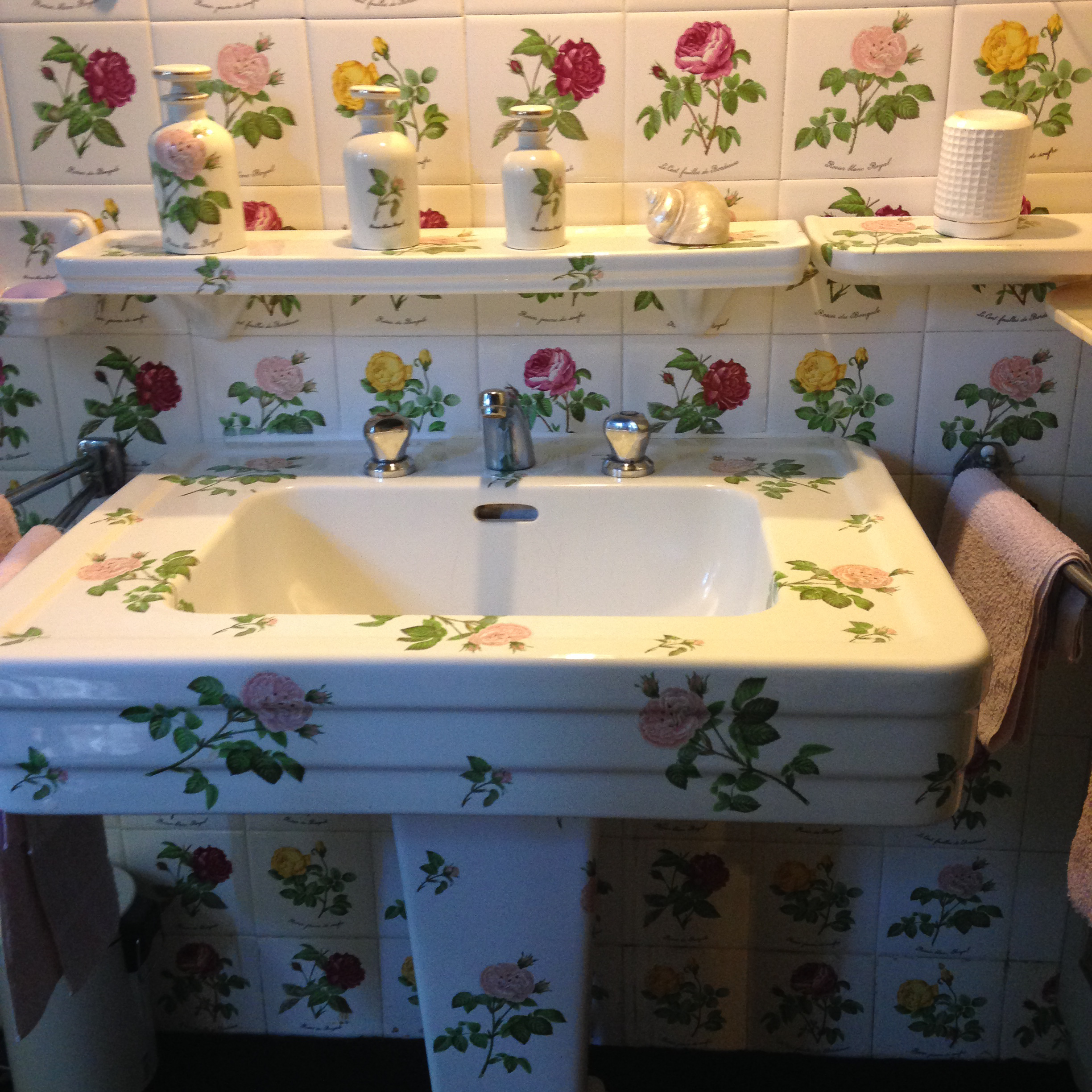
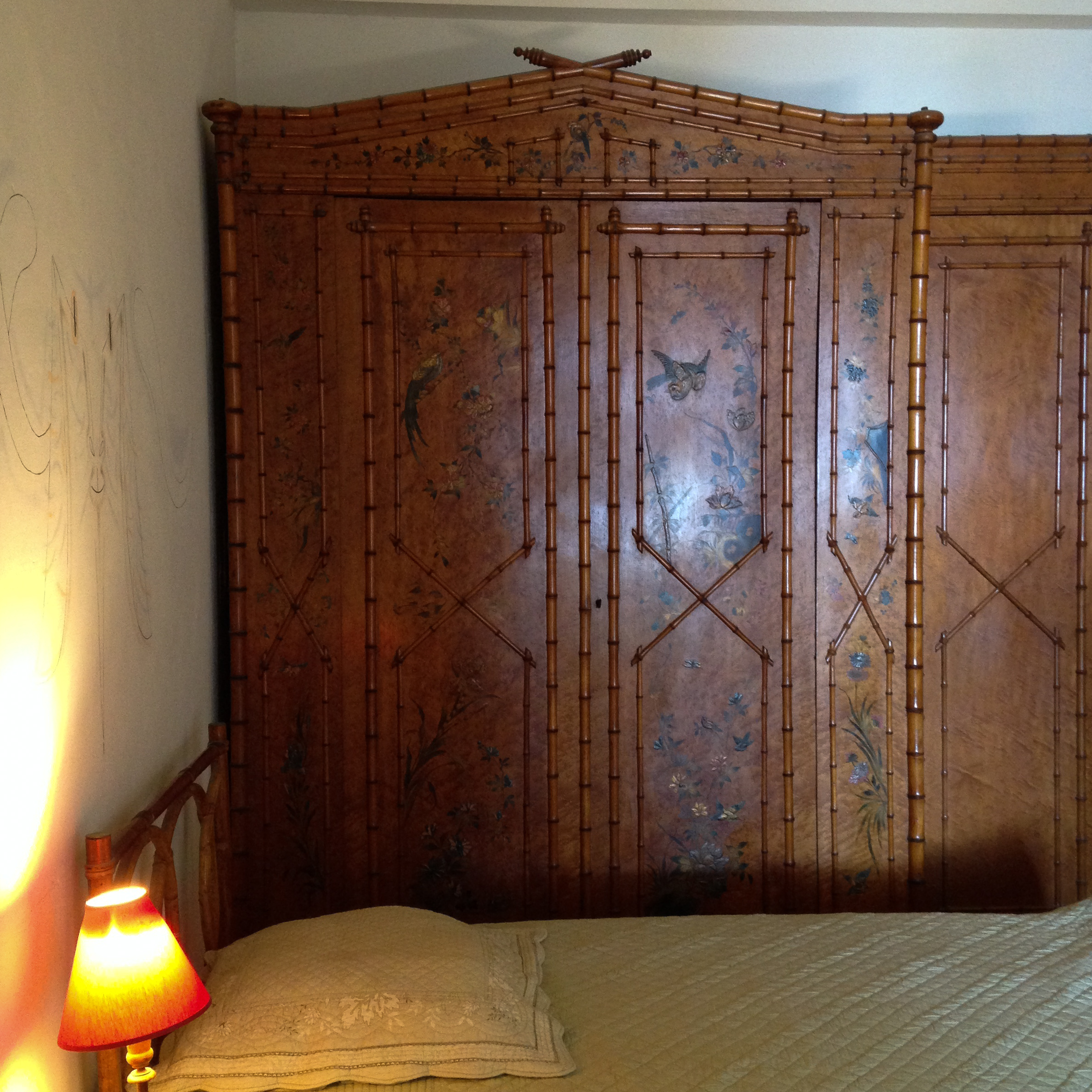

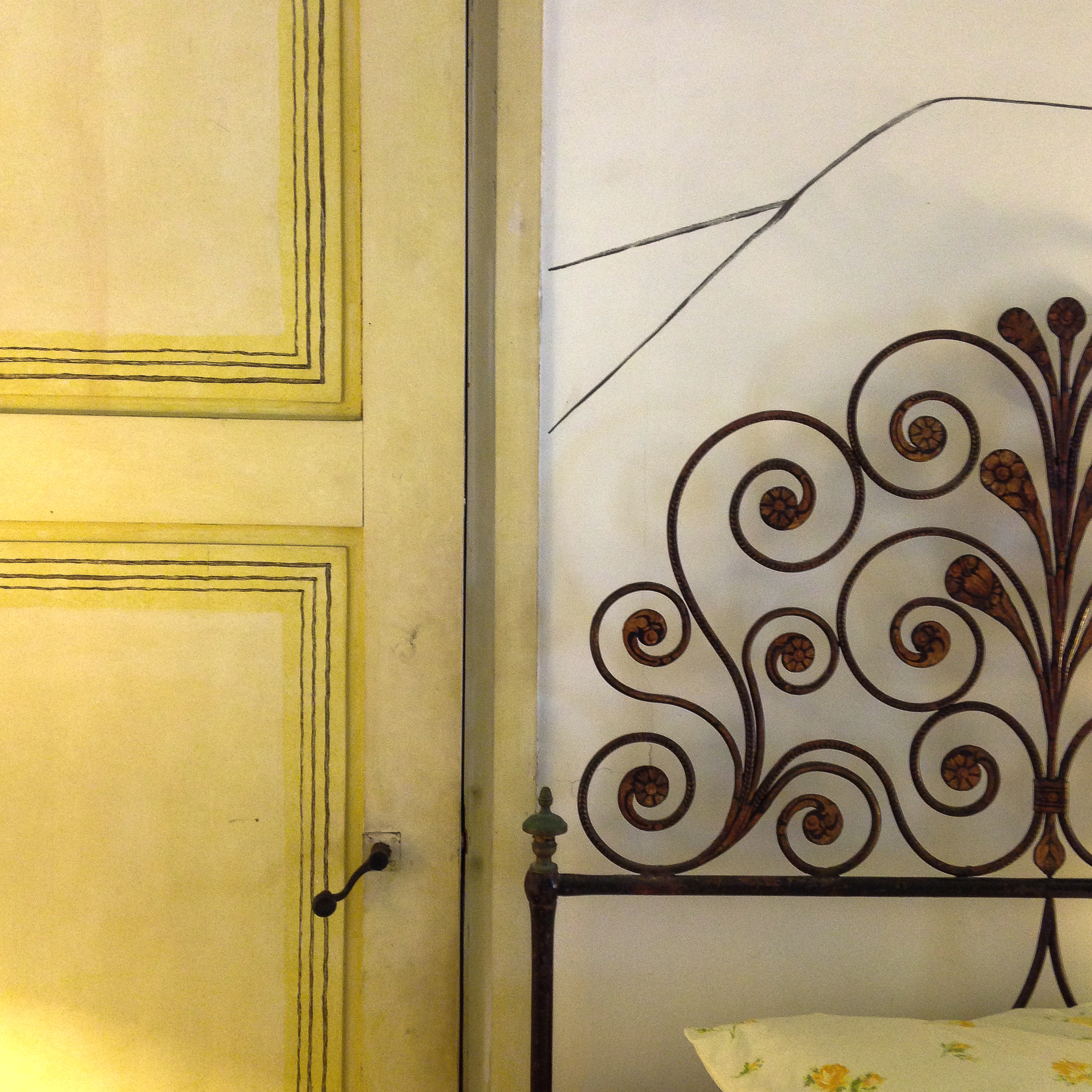
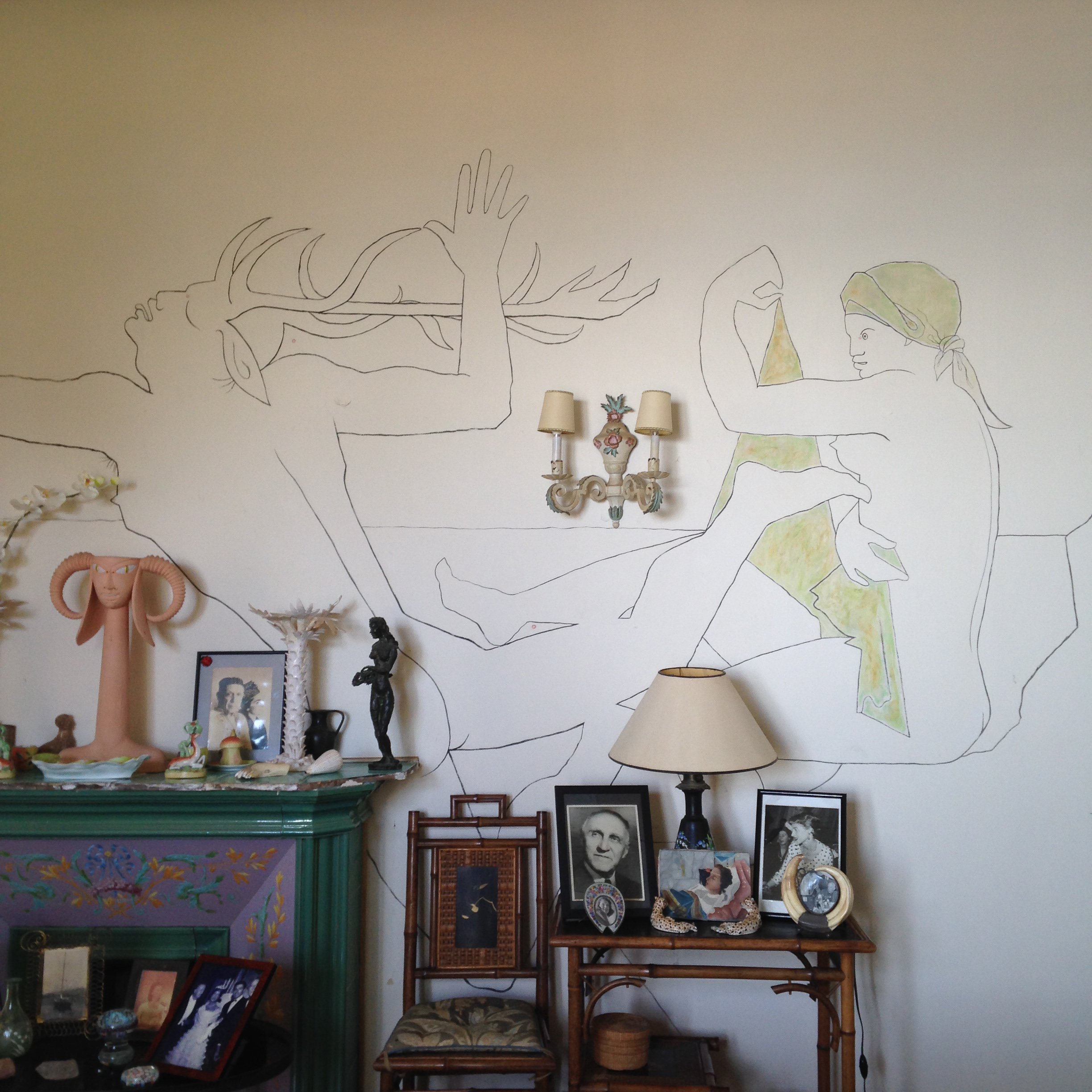
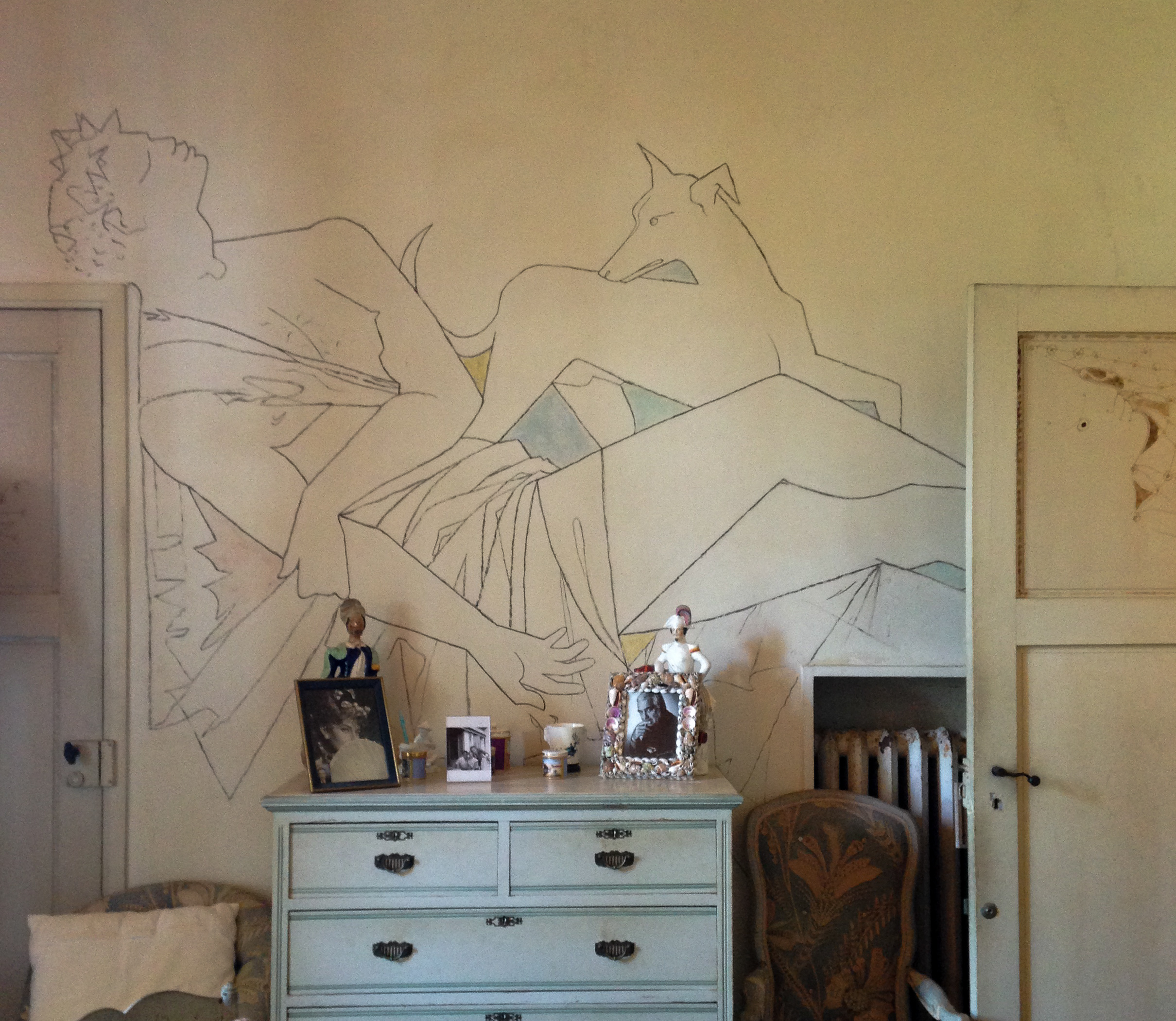
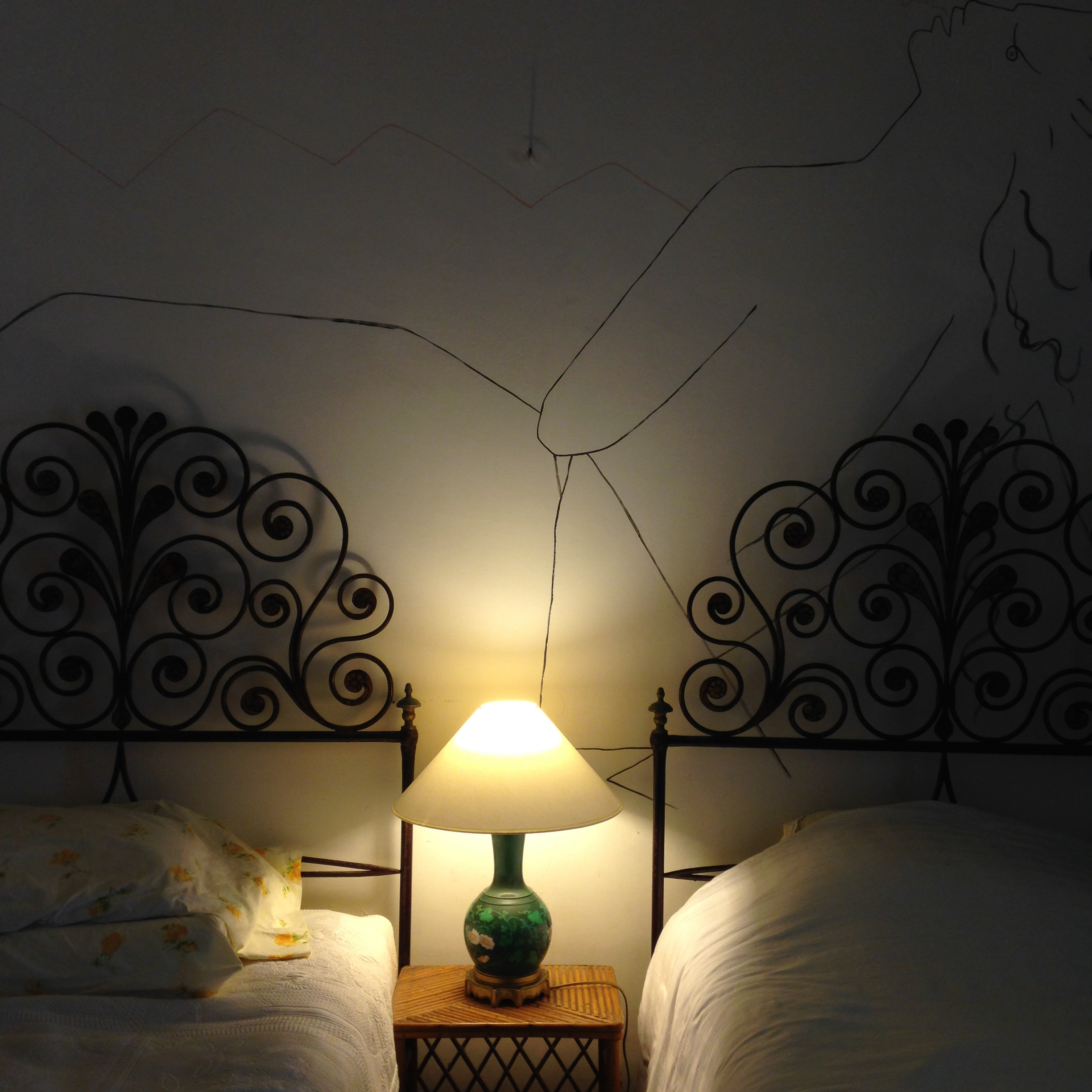
Standing here, mid afternoon in May, it feels as if someone lives here still. Maybe that’s the magic of it all. Nothing about this place feels static--- as if the frescoed walls have kept warm the spirits of its inhabitants. It reads like a kind of illuminated manuscript, breathing life into the spaces well beyond the residents’ departure. So how did it all end? Francine and Cocteau continued their close relationship for many years, until she became involved with another man. It’s written that this shift in loyalty and romance was met with envy and disdain. Cocteau would eventually depart Santo Sospir, continuing his exploration of poetry, film, art, and playwriting elsewhere. He eventually settled nearby in Milly-la-Forêt.
On the terrace, I can see for miles, my eye only stopping for a moment at the next shoreline. There, Cocteau painted the chapel of St. Pierre in Villefranche, and later the town hall of Menton. He even designed a Greek theatre in nearby Cap d’Ail. Marteau steps out onto the terrace, pointing next door, “and those are Russians, too.” There are a lot here, so much that the local television broadcasts more than a few exclusively Russian networks. “But they rarely come out.” The walls on either side of the neighboring homes are stately, well-manicured, and speak for themselves about who or what lies behind. After all, it was Somerset Maugham was described Cap Ferrat as “a sunny place for shady people.” Yet Santo Sospir feels modest and untouched, between all the grandiose villas with names like Rothschild and Microsoft whispered among them. This villa seems to read much more like an old book, pencil-marked and dog-eared, resting open on the nightstand. Within its pages live enthralling characters set against otherworldly backdrops and a cerulean point of view, quite literally, like no other.
In 2005, Villa Santo Sospir was designated a Monument Historique by the French Government. It is currently closed for renovation for the next two years under the direction of a new owner who remains committed to preserving its magnificent legacy. All photographs were taken in 2015 by Addie Chapin prior to renovations.
https://www.nytimes.com/2010/08/22/t-magazine/22well-cocteau-t.html
https://www.telegraph.co.uk/news/obituaries/1450644/Francine-Weisweiller.html
https://www.santosospir.com












